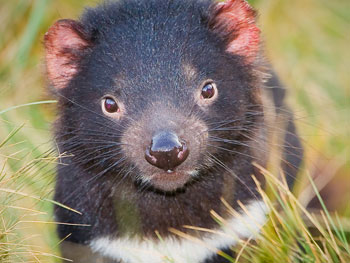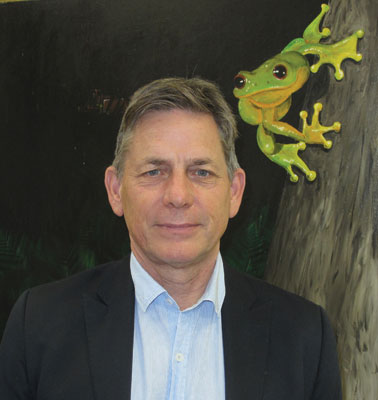Ian Darbyshire Tasmanian Devils Extinction Interview

Australia's Extinction Record Is One of the Worst in the World
Despite all efforts to preserve the species, it is estimated that there are less than 10% of Tasmanian Devils currently left in the wild.
Captive breeding programs are saving the Tasmanian Devils from the brink of extinction.
One of the largest living carnivorous marsupials in the world.
The decline of this species is largely attributed to Devil Facial Tumour Disease (DFTD) which is abruptly wiping out this animal. DFTD is a contagious disease that results in death from starvation, dehydration and the break down of body functions.
With the discovery of DFTD in 1996, numerous organisations have been working to protect, breed and try to find a vaccine for the disease. One of these projects is Devil Ark, a Tasmanian Devil captive breeding program in NSW's Barrington Tops. The Foundation for National Parks & Wildlife (FNPW) is working with Devil Ark to ensure the survival of the Tasmanian devil through an innovative breeding program.
'Australia's extinction record is one of the worst in the world. There are currently 1700 threatened species in the country and since the European settlement, 10% of Australian mammals are extinct. We need to make sure that these species and other endangered species are protected so that they can be enjoyed by future generations," says Ian.
For more info visit www.fnpw.org.au.
 Interview with Ian Darbyshire
Interview with Ian Darbyshire
Question: Why has the Foundation for National Parks & Wildlife decided to focus on the endangered status of the Tasmanian Devils?
Ian Darbyshire: FNPW believes in the conservation and protection of Australian wildlife and sees the survival of the Tasmanian Devil as a priority due to their rapidly declining population numbers over the last two decades.
Question: How has the status of the Tasmanian Devil changed in the past five years?
Ian Darbyshire: Due to the highly contagious and fatal transmission of the Devil Facial Tumour Disease, the Tassie Devils are classified as an endangered species. This status was exacerbated by the identification of another strain of Devil Facial Tumour Disease in 2014. These factors have resulted in a drastic population decline, with over 90% of the Tassie Devils being wiped out over the last two decades.
Question: Can you tell us about the captive breeding programs currently being run?
Ian Darbyshire: One of the breeding programs, Devil Ark, which FNPW helped raised funds for, is creating an insurance population of Tasmanian Devils and has been running since 2011. The program is based on the Australian mainland in Barrington Tops, NSW to ensure there is no risk of infection from diseased wild devils. This allows for genetically diverse devils to be released back in Tasmania to encourage healthy populations to grow. There are other breeding programs in Australia including at a number of zoos. This is vital for the survival of this species.
Question: Why do you believe there are less than 10% of Tasmanian Devils currently left in the wild?
Ian Darbyshire: The Devil Facial Tumour Disease has been the biggest threat to the species. The disease is a fatal condition, restricted to Tasmanian Devils only. The cancer is transmitted through biting during feeding, mating or fighting, and is characterised by tumours mainly around their mouths and other parts of their bodies. These dwindling numbers have forced reduced and earlier mating patterns for the devils, stunting their population growth. The devils usually die within a few months of visible symptoms of the cancer appear. When the disease was first identified, there were approximately 250,000 devils in the wild, now there are less than 25,000 remaining.
Question: How can we prevent the Devil Facial Tumour Disease?
Ian Darbyshire: Currently, there is no known cure for the Devil Facial Tumour Disease, but trial vaccination programs have been launched by some programs, however the results are not guaranteed. The only way to ensure their survival is through captive breeding programs to generate insurance populations, and fundraising for these programs is key.
Question: How can Australians help protect the Tasmanian Devil?
Interview by Brooke Hunter
MORE



